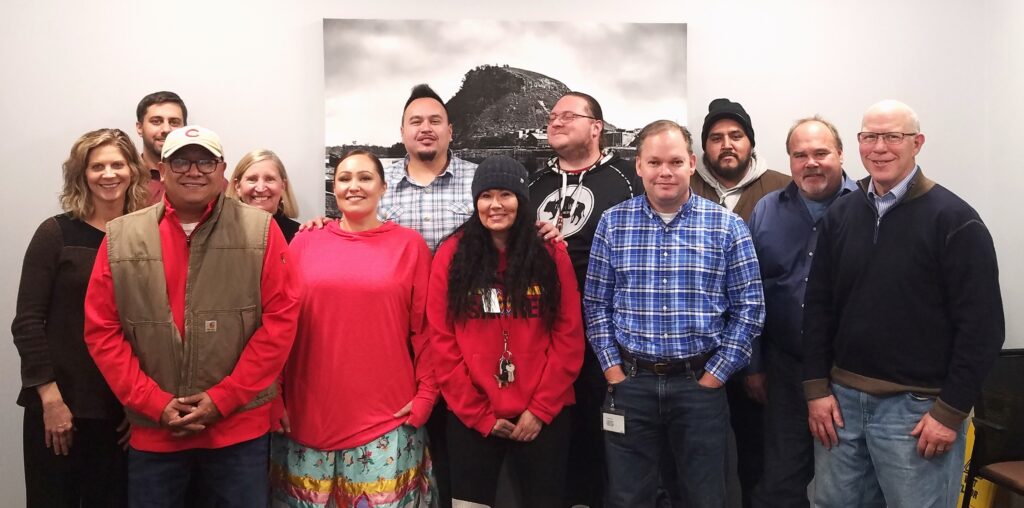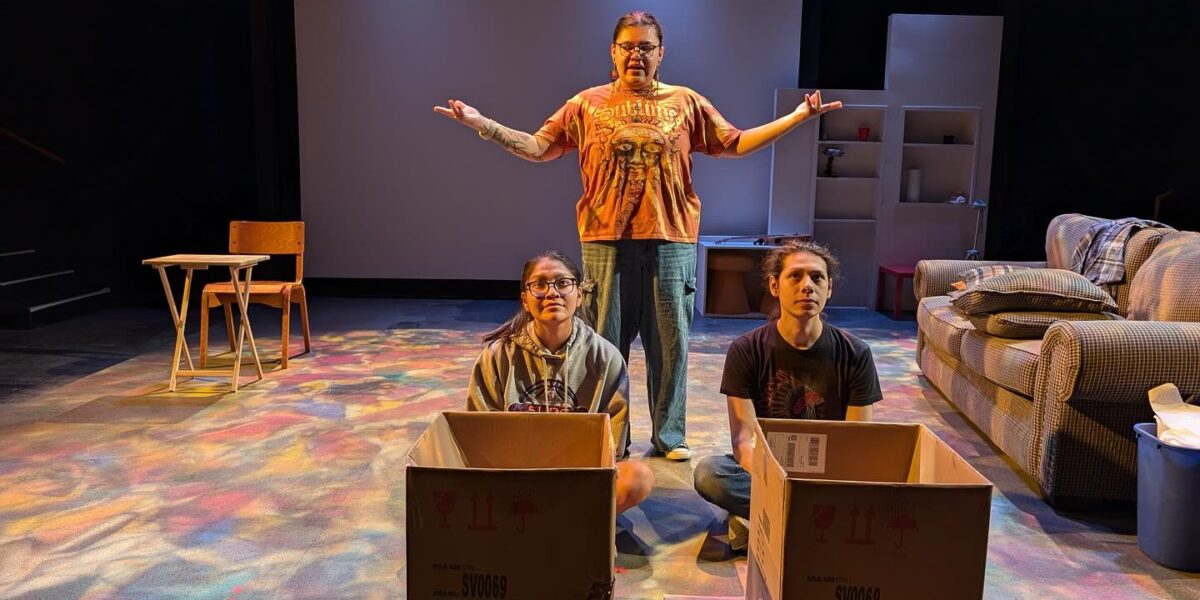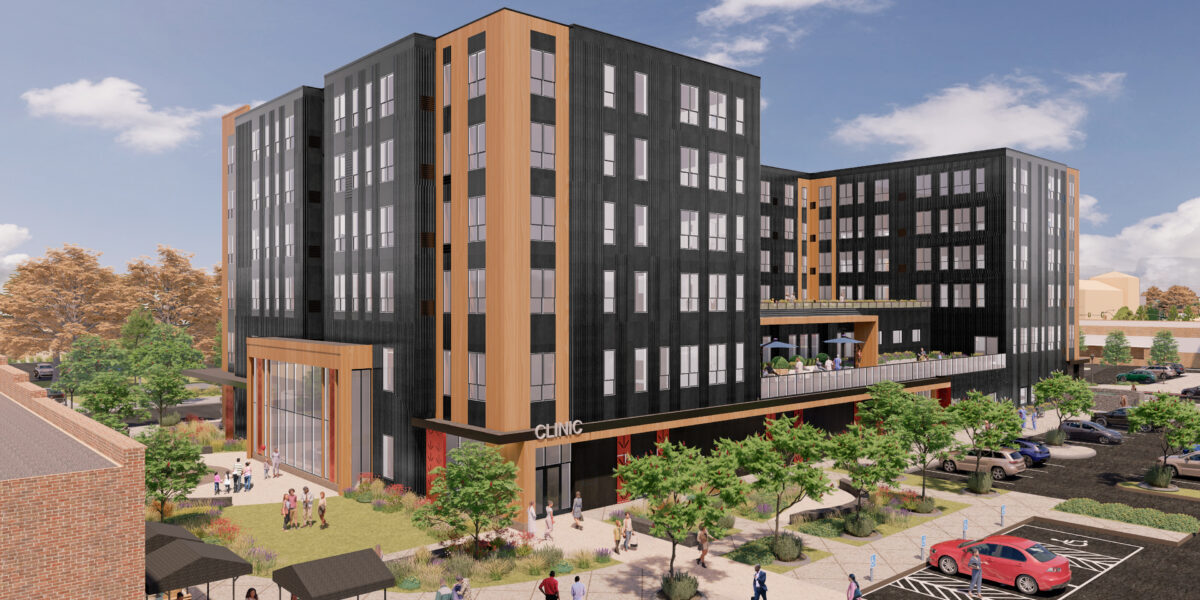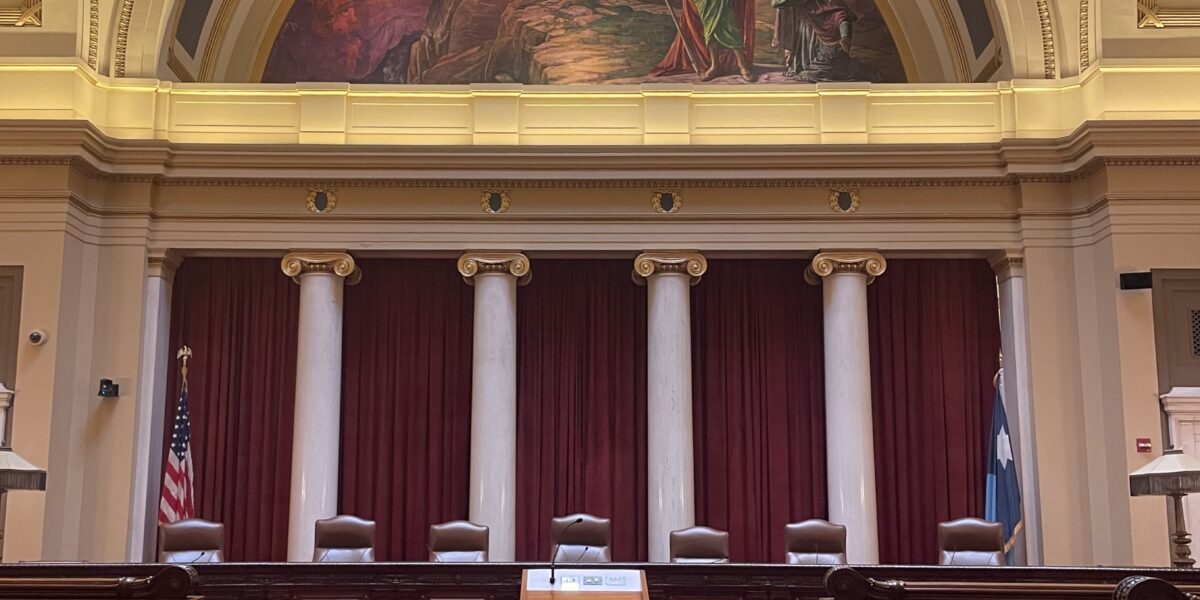
| INTRO: The City of Red Wing recently closed a dog park that stood on top of Dakota burial mounds. Estelle Timar-Wilcox spoke to tribal and city leadership about the park’s closure and the partnership helping the tribe reclaim its historical landmarks. Estelle Timar-Wilcox: The city of Red Wing is built over more than three thousand Dakota burial mounds. Many of these have been destroyed since the city was founded in 1857. City representatives said that, for a long time, construction projects would go ahead without consideration of those sites. A.P. Anderson Park sits on some still intact mounds, where a playground and a dog park were built over them. But in mid-November, the city closed the dog park to help preserve the site. Franky Jackson: The tribe has more than just a passing interest when it comes to these burial mounds that are often just thought of as antiquities on the landscape in a detachment to people. Mounds hold our ancestors, our relatives. ETW: Franky Jackson works with the Prairie Island Indian Community’s Historic Preservation Office. He said people from Prairie Island have known about this burial site for a long time. An archaeologist documented the area in 1885. In the 80s and 90s, Red Wing made an effort to map out the city’s burial mounds. FJ: The tribe has known about them, and city folk too, knew that there were there mounds in that area, both before the park was constructed, during the time of construction, and then certainly after. There have always been voices, both from a tribal level and from a Red Wing constituent level, of people who have always voiced concern and opinion about, you know, that area being utilized for that level of recreation or open activity like that. ETW: But at the time, nothing was done about A.P. Anderson Park. Then, earlier this year, representatives from the city and the tribe met at the park to discuss some planned playground construction. Tribal members and an archaeologist pointed out that the park was on burial grounds. Michelle Leise is the Community Engagement Facilitator for the City of Red Wing. She said that everyone at the meeting quickly agreed that the dog park would need to close. Michelle Leise: We looked at each other and we just knew that had to change very quickly. So there wasn’t even much of a discussion. It was sort of how and when and what are we going to do right now? ETW: Jackson said the city opened two new dog parks nearby to make up for the closure. It’s also tearing down some playground equipment that stands on burial grounds. Leise said this decision was pretty easy — but only because the city and the tribe have put a lot of work into building a relationship over the last few years. Two years ago, they signed a memorandum of understanding — an agreement between the tribe and the city saying they would collaborate on big decisions like city planning and environmental projects.The agreement is a unique setup for a city and a Native community. Jackson said it’s brought the city a long way in considering historic sites like the burial grounds. FJ: It allows for the tribe to have a voice and a platform for them to express why places like this are important to them, and why it’s beneficial for us to look at alternative ways of managing these landscapes. ETW: Now, representatives from the tribal government and the city meet regularly. Leise thinks it has made people more open to making changes in the city and honoring its Dakota history. ML: I give a lot of gratitude, a lot of thanks, to Prairie Island Indian Community and all the staff and folks because, you know, they’ve opened their doors and they’ve opened their hearts and we’ve been able to be partners together. It’s easier to talk to community when you have built up some trust and relationship between tribe and city, and so that’s been a really great gift that we work hard at, and we know it’s important to do that. ETW: As for the dog park, the city and Prairie Island Indian Community are working together to figure out what will come next at the site. They’ve floated ideas for transforming it into an educational site over the next few years. For now, it’s closed to the public. Jackson said he hopes the city and the tribe keep progressing on historic preservation. FJ: It just stretches far beyond just this project at A.P. Anderson Park. There’s a plethora of other collaboration that’s going on that this agreement has led to. Again, you’re seeing it really strengthen and empower folks from both ends of the aisle and bring people together in a real positive way, so I think that’s really reassuring. For Minnesota Native News, I’m Estelle Timar-Wilcox. |
More from Minnesota Native News
- New Native Theatre’s 15th Year & REAL ID
 This week, how REAL ID requirements impact Indigenous people, especially Two-Spirit individuals. Also, New Native Theatre’s latest play runs April 16-May 4.
This week, how REAL ID requirements impact Indigenous people, especially Two-Spirit individuals. Also, New Native Theatre’s latest play runs April 16-May 4. - Ziigwan Biidaajimowin (Spring News): NACC Issues Call for Artists and Little Earth Kicks Off American Indian Month with a Parade
 This week, Minneapolis’s Native American Community Clinic (NACC) seeks artists to commission pieces for their new building. Plus, nearby, the Little Earth of United Tribes housing community will kick off May’s American Indian Month with a celebration organized in part by the Minneapolis Public Schools American Indian Youth Council, Ogichida Oyate
This week, Minneapolis’s Native American Community Clinic (NACC) seeks artists to commission pieces for their new building. Plus, nearby, the Little Earth of United Tribes housing community will kick off May’s American Indian Month with a celebration organized in part by the Minneapolis Public Schools American Indian Youth Council, Ogichida Oyate - Indian Child Welfare Law Challenged at MN Supreme Court and Native Nations Impacted by Proposed SAVE Act
 This week, the Minnesota Supreme Court heard arguments in a case that could reshape child custody laws for Native American children. Also, the Safeguard American Voter Eligibility (SAVE) Act would require all Americans to prove their citizenship in person with official documents when registering to vote.
This week, the Minnesota Supreme Court heard arguments in a case that could reshape child custody laws for Native American children. Also, the Safeguard American Voter Eligibility (SAVE) Act would require all Americans to prove their citizenship in person with official documents when registering to vote.
Subscribe to Minnesota Native News in your favorite podcast app

 Dr. Melissa Blind: Working to Improve Indigenous Health and Dementia Research
Dr. Melissa Blind: Working to Improve Indigenous Health and Dementia Research